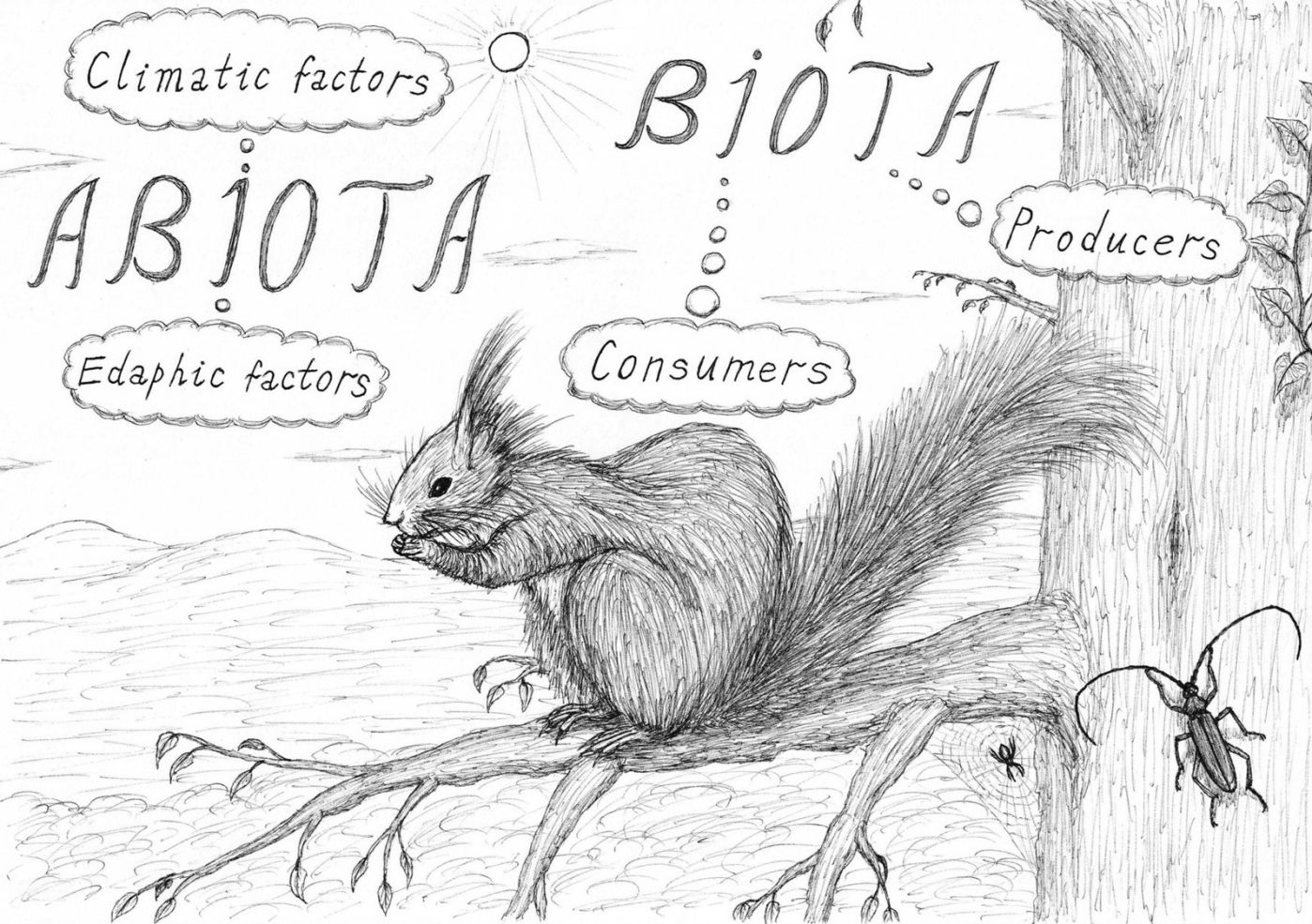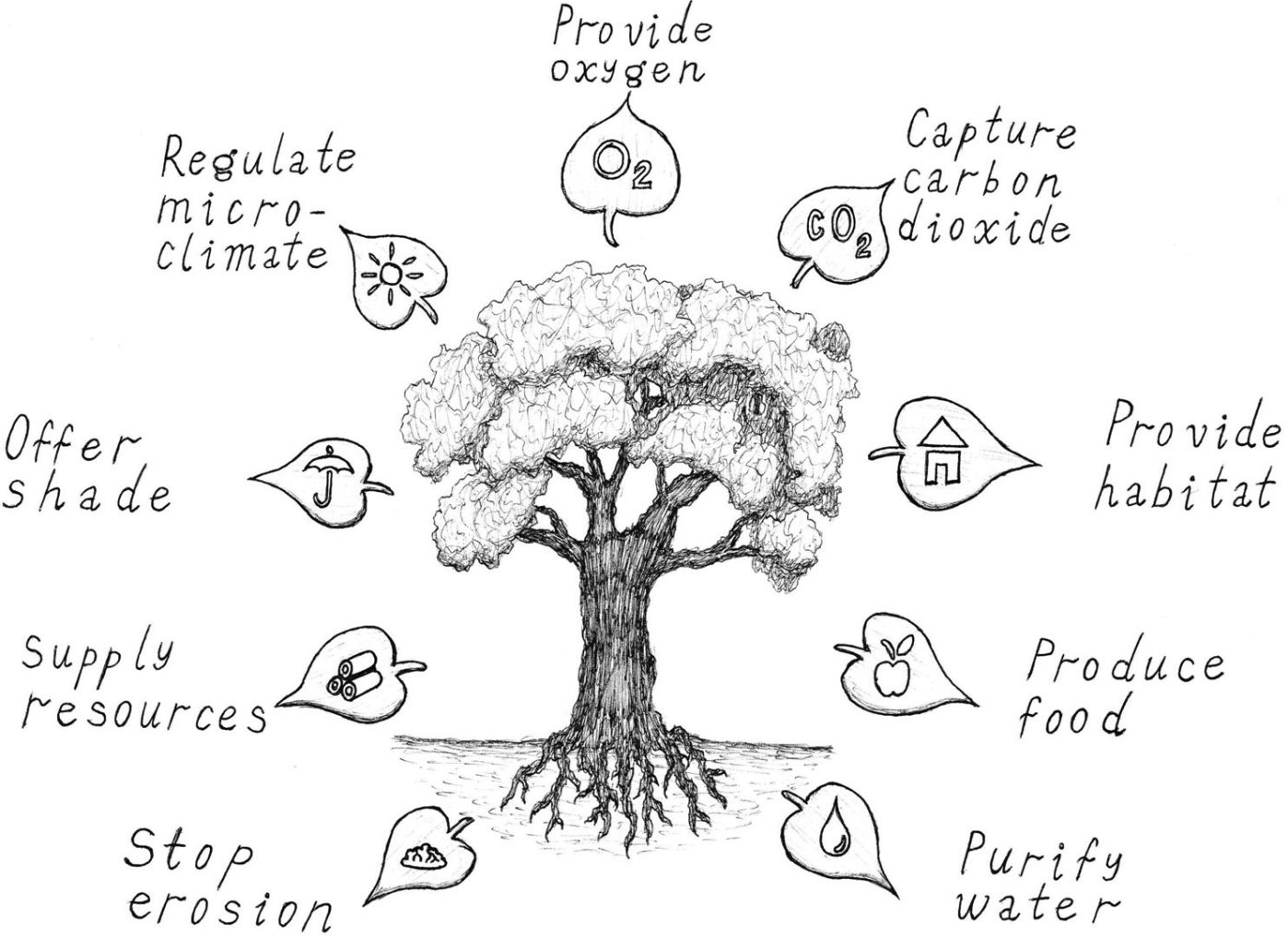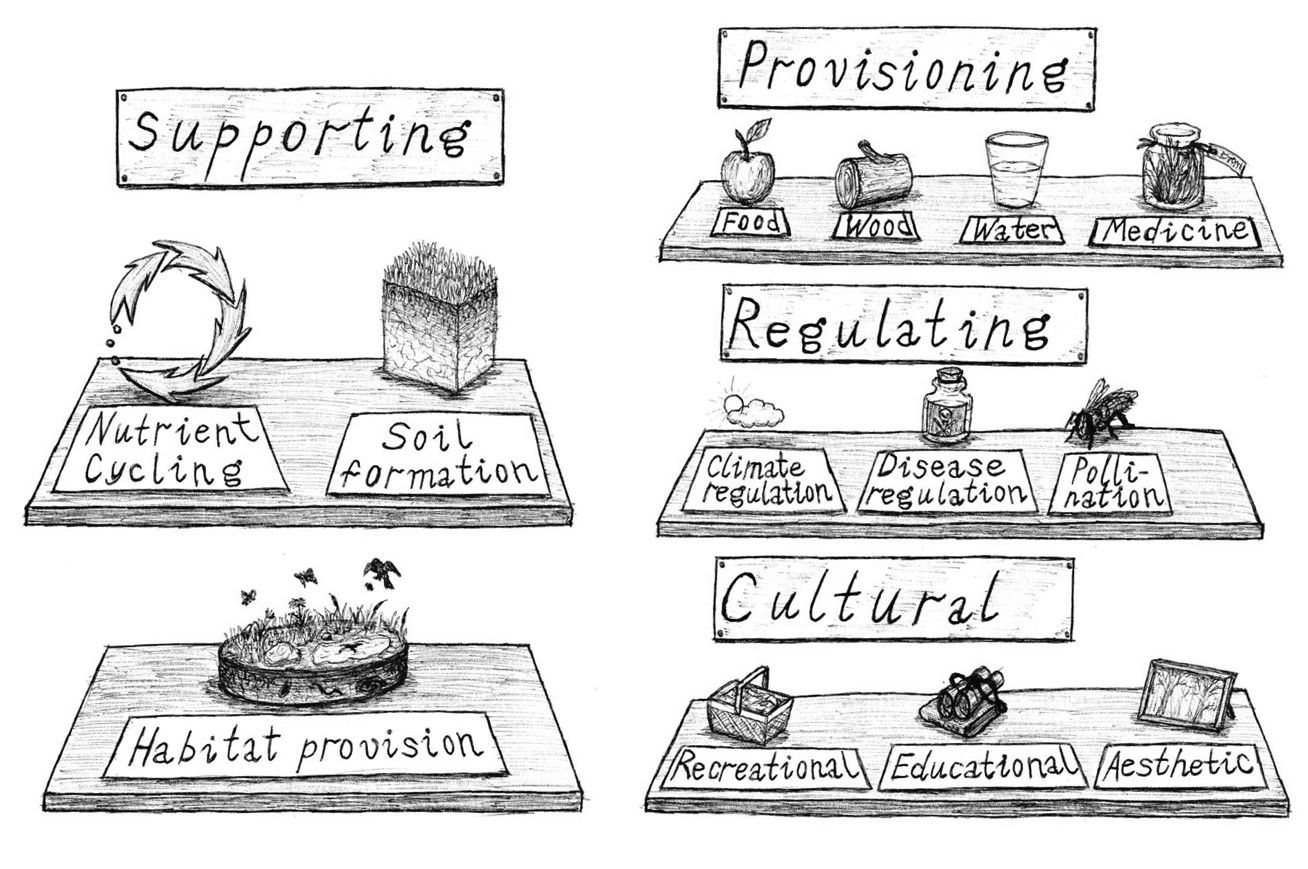
Benefits and Services of Forest Ecosystems
Greetings, dear Friend! And welcome to the forest! This is a complex ecological system consisting of biota and abiota that provides a variety of ecosystem services… Wait… Wait... Too many "fancy" words. Let us start this all over again, but now in a simple language.
So, forest is an ecological system, or ecosystem. Ecosystem is a combination of living organisms, called biota, and non-living components, called abiota, that work together in a closed system. This system is characterized by nutrient cycles and energy flows.
For example, here, in the forest, we can see plants, moss, grass, and animals that represent living organisms. At the same time, we have here fresh air, water cycling, nutrient cycling, carbon capture, and so on that represent non-living components. Altogether, the components of an ecosystem are much more than the sum of its parts.

Figure 1. Components of a forest ecosystem.
Driven by the dynamic combination of different components and their interrelations in an ecosystem, that ecosystem performs certain functions. These functions give certain benefits to people, for example, to myself. And these benefits that an ecosystem offers to people are called ecosystem services.
For example, let us look at this tree. One thing that the tree gives me is fresh air that I breathe in. It also recycles my carbon dioxide that I breathe out.
Then, I can use the branches of the tree or the wood inside of it to either use it as firewood or... I can cut it, sell it, and gain economic profit. Then, this tree also purifies water (groundwater) that is going through its roots. Then, this tree also provides visual amenity. Like, I receive pleasure from viewing this tree.
So, alltogether these non-use and use benefits of the tree are actually ecosystem services of that tree. And when combined with all the trees of the forest, we have the forest ecosystem services.

Figure 2. Diverse benefits (services) of a tree.
To make the identification and assessment of ecosystem services convenient, scientists have categorized them into four main categories. These are: Provisioning, Regulating, Cultural, and Supporting ecosystem services.
So, provisioning ecosystem services, as their name suggests, provide people with certain products and resources for consumptive use and for a good life.
The examples can include food, such as berries and mushrooms; fresh water for drinking and other purposes; timber for firewood or for cutting and constructing houses… Then, for example, medicinal plants or other herbs for collection and, generally, leaves, branches, grass, plants, and other materials that can be used in handicraft and for other purposes, like producing some items and selling them, and so on.
So, regulating ecosystem services help to regulate the environment to create favourable and supportive living conditions for people and other organisms. These regulating ecosystem services can include pest control and disease control; pollination by insects, which contributes to the food supply; water purification and air purification; and carbon capture and sequestration. In fact, considering that climate change is one of the issues present in the modern world, carbon sequestration by forests is one of the major contributor to mitigating that climate change.
Then, there are cultural ecosystem services. Cultural ecosystem services provide benefits (mostly non-quantifiable benefits) to people in terms of enhancing the development of literature, art, religion, and other aspects of cultural life.
Examples here can include the recreational value, when people come to the forest to relax and rest after a work day. They can come to the forest for aesthetic pleasure of observing the beautiful landscape of the forest, for cultural and spiritual events, holidays, and celebrations, and for scientific and educational purposes. In fact, what we are doing now is that we are using the forest for educating you about ecosystem services. And, for example, the Amazonian forest has enormous cultural and spiritual significance for the local communities inhabiting it. Therefore, these communities attach enormous value to the forest we damage.
Finally, we should not forget about supporting ecosystem services. These are the services that ensure that an ecosystem can provide all other services that we’ve mentioned before. Examples of supporting ecosystem services include: photosynthesis in plants and leaves of trees, soil formation and all the processes of soil maintenance, and nutrient cycling in the entire forest.

Figure 3. Four categories of ecosystem services.
So, as you have seen, the forest is an ecosystem that provides a multitude of services. These services are beneficial to people in different ways: in terms of economic development as the suppliers of resources and in terms of cultural and health benefits as the providers of fresh air, food, and other resources and as the stimulants for cultural, spiritual, and scientific development.
Some of the services can be clearly visible, while others are performed "on the background".
But why do we need to know about these ecosystems, their services, and so on? Well, firstly, when we know what the forest brings to us, we can actually see how valuable this forest is to the economic, social, cultural, and scientific development of people. Then, it allows us to assess how much the forest brings to us in terms of benefits, as well as how much we are losing in benefits if the forest is polluted.
Now, knowing what benefits this forest brings to people, to me and to you, and what its ecosystem is generating in terms of gains for us as human beings, don’t you want to protect it and conserve it in its natural state? Well, I certainly do.
At this point, you may ask: “So, how can we document the contribution of the forest ecosystem to people’s economic and social wellbeing? And why does it matter? Why do we need to do this?” In fact, answers to these questions we will explore in the next training. See you there!
DISQUS COMMENTS WILL BE SHOWN ONLY WHEN YOUR SITE IS ONLINE